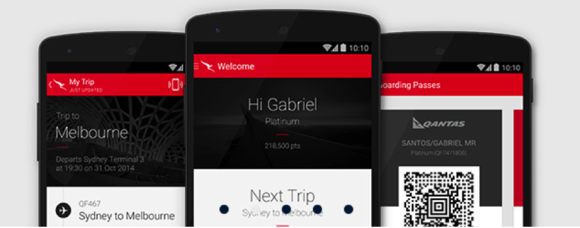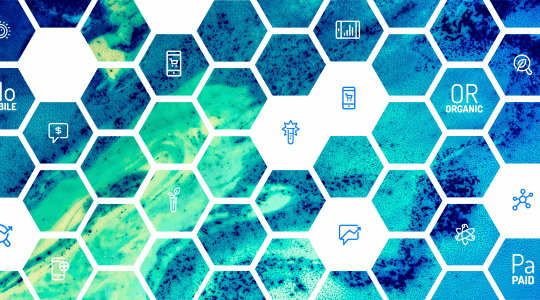To start I want to make a statement: mobile games have been around longer than mobile phones.
I can remember the first handheld game consoles in the 80s, which allowed you to play Donkey Kong, Mario Bros. and Pac-Man on the go. So it’s not strange that games had a head start when mobile phones started to become popular.
Based on my experiences as a game developer (released my first mobile game in 2001) and with user acquisition and monetization on mobile, I want to share some insights that can help brands and utilities leverage existing strategies to improve their user acquisition, engagement, and overall campaign performance.
8 lessons from gaming apps
The First Session = Key Engagement Opportunity
Because of the crazy amount of games released in app stores every day (at the moment over 500 per day on iOS only!), there is not room for a second chance. You have to engage the user from the first interaction and games often do this by making you follow a tutorial that explains how the game works. You immediately interact with the app in a way that is engaging.
Too many non-gaming apps let the user install the app, and when the user opens the app for the first time, he has to figure out what to do all by himself.
At least welcome the user, show him some basic functionality and make sure he doesn’t feel overwhelmed by the features you are offering. It’s all about engaging and educating the user as soon as possible and setting the right expectation.
Educate the User on In-App purchases
Many games, and more and more brand and utility apps, are monetizing their users with in-app purchases. This is a great way to give away your app for free, and still make money without showing advertising in your app (nothing wrong with advertising, but that is another business model).
But how do you educate your user on the benefits of making an in-app purchase? Games often have a dual currency system, virtual currency that you can earn by playing the game, and hard currency that you have to buy with real money. But when the user starts using the game, he will get some hard currency as well, to make him understand the benefit of using it.
Brands and utilities could give away a little of their paid content, news apps a few free articles, messaging apps some stickers of emoticons etc. This way the user understands how to use the in-app purchases and the barrier to make the purchase is a lot lower.
Commitment to Continuous updates
Users, and mobile users in particular, are going through content quicker than you can develop it, and their attention span is quite short. So you must make sure that you provide regular updates. This gives the user the feeling that the product is well maintained and will trigger the user to check the app more frequently.
Many games do this in a great way, they make sure that when they release their product there is enough content available for release to keep the player happy for a certain amount of time. They don’t release all the content at once, but do frequent updates.
This is also a great way to re-engage with your users — send them a push notification when you’ve added content!
Brands and utilities could release features, articles, videos and many other types of meaningful content, and notify the user to make sure he opens the app again.
Personalize for Deeper Engagement and Relevancy
As a user you want to have the feeling that an app (or game) is tailored to you and your needs. Games can do this by showing notifications that are related to your level in the game, so presenting relevant content at the right time.
Brands could do this by providing exclusive content for users who interact with the app more frequently, or by adding something like a loyalty program, that unlocks content for users with a specific status.
A great example in the ‘real world’ are the airlines frequent flyer programs, this could work for mobile apps as well. Here is an example from Qantas, where everything from your check-in, booking and frequent flyer program can be managed all on mobile.
Social Engagement Kudos
There is nothing more important than bragging rights and involving your (digital) friends into your game. Improving your scores in your favorite mobile games is nice, but it’s even nicer to brag about it on social networks. For example, in popular trivia app Trivia Crack, you can easily share scores and other achievements:
For you as a developer, making it easy to share high scores and achievements should be a priority, as these user generated actions provide free publicity and serve as a great opportunity to acquire engaged users.
Brands should definitely leverage the power of sharing, many of them are already doing it, but they have to become smarter and think of relevant content to share. They also could reward users to share content by creating a benefit when they share, i.e. discounts on real life products, unlock in-app content or earn points.
Rating your App – Timing is Critical
Ratings are very important for your app store and search rankings, and not everyone is using it as they should. I’ve seen many apps just prompting a request for rating without any logic, even when starting an app for the first time.
Game developers started to leverage this benefit relatively early. Based on what they do, brands could do the following:
- Never ask for a review immediately after launching the app.
- Find the perfect moment to prompt the user (after a ‘feel good’ moment is the best).
- Only ask once, if they said no, don’t ask again!
- Don’t be annoying (again, timing is crucial).
Dig into key Analytics
Understand the user journey and behavior. What are the first things a user does in your app? What triggers him into certain behavior?
Games have been doing that since day one, many tools like Flurry and GameAnalytics are designed for mobile game developers. Now there are many more tools that help App developers in general to understand (and act on) user behavior, like Localytics, MixPanel or Google Analytics.
It’s important to estimate the Lifetime Value (LTV) of a user as quickly as possible. When you can estimate this, and you know from what ad network, app or campaign this user came from, you can ramp up the user acquisition from this channel.
Utilize the right ad techniques
For both user acquisition and monetization, game developers were the pioneers on mobile regarding in-app advertising.
Game developers often didn’t have a significant user acquisition budget, so they had to be clever on how to acquire users. Users were not familiar with spending money on in-app purchases, so game developers needed to find other ways to monetize users.
Examples of common in-app advertising techniques include:
Banners: It started out with simple banners, because that is what everyone knew from the web. This quickly evolved into incentivizing the user to install an app, to quickly increase your user base. TapJoy is the prime example of a network that allowed developers to buy installs for a very low price.
Offerwalls: Offerwalls were designed and developed specifically for games. You could get in-game items or credits by installing other games.
Cross promotion: Cross promotion was a way to cheaply gain users from both your own inventory by using Chartboost, or by click trading through networks such as Applifier. My experience is that now also brands and utility apps with more than one app in the App Store are using cross promotion. This because they can identify relevant users in their existing apps, and don’t have to pay for installs to a network or other developer.
Interstitials: For many game developers, the real change in mobile advertising came with the rise of the interstitial; a full screen ad, that the user either had to click or close. Both the advertiser and publisher benefitted from the huge increase of effectiveness (up to 20x of a traditional banner in eCPM and IR).
Video: Brands and utility apps are still using a lot of banners, and the argument they use is that it doesn’t interrupt the user experience. But lately we’ve noticed a big shift to interstitials and video, as the developers of these apps understand that the high eCPMs and IR proves the user would rather see one interstitial than 20 banners.
The latest development that started with game developers is video advertising. Just show the user a video of your product, and the acquired user will be of a lot higher value than one gained through other creatives. Videos are used for both incentivized and non-incentivized campaigns (where the user is not incentivized to install an app, but to watch the video). More and more brands are using video to create brand awareness, not just to gain installs. They are starting to realize that the traditional way of consuming entertainment has completely changed, especially for the target group below 25.
Conclusion
Games have been available on mobile platforms since day one, and the rapidly evolving industry forced game developers to re-evaluate their distribution and monetization models on a regular basis. The challenges they faced made them very creative, and for a large portion, have driven the evolution of mobile user acquisition to the point where it now stands.
Brands have been trying to catch up over the last few years, and they have had a hard time adjusting to the move from desktop to mobile. Now we are at a point where brands are spending top dollar on mobile advertising, and game developers are adopting the advertising strategies from brands. This is a sign that the market is maturing, brands are taking over a lot of inventory on mobile to run (non-performance driven) branding campaigns, and game developers are using TV and outdoor advertising to drive installs (and brand their games).
If we take a look at the near future, I think that brands have learned a lot from games, but that games are now starting to see the value of pure branding. So non-performance driven advertising will become more important for game developers as well. They’ve always been very analytics driven, and with the current availability of measurement tools, they are better able to understand the results of their non-performance based advertising.
Like this article? Sign up for our blog digest emails.
Author
Becky is the Senior Content Marketing Manager at TUNE. Before TUNE, she handled content strategy and marketing communications at several tech startups in the Bay Area. Becky received her bachelor's degree in English from Wake Forest University. After a decade in San Francisco and Seattle, she has returned home to Charleston, SC, where you can find her strolling through Hampton Park with her pup and enjoying the simple things in life.






It is incredible how many brands skip over the very first step. Welcome the USER!
Great post Ilja!
I’m actually surprised I haven’t seen more brands use video. Brands know ALL about video.